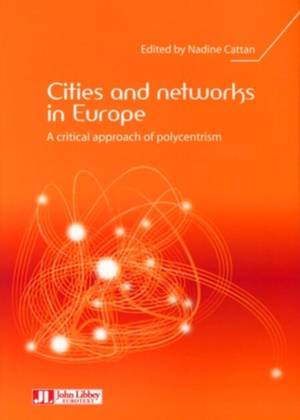
- Afhalen na 1 uur in een winkel met voorraad
- Gratis thuislevering in België vanaf € 30
- Ruim aanbod met 7 miljoen producten
- Afhalen na 1 uur in een winkel met voorraad
- Gratis thuislevering in België vanaf € 30
- Ruim aanbod met 7 miljoen producten
Cities and networks in Europe - A critical approach of polycentrism E-BOOK
a critical approach of polycentrism
Nadine CattanOmschrijving
The aim of this book is to look at the dominant representations that at present underpin the issues of territorial organisation and planning in Europe. Cities and networks are often envisaged as inevitably driving territorial development. However, the conceptualisation of European territorial integration has often been reduced to two conventional models: the centre-periphery model and the hierarchical model of urban networks. Limiting territorial integration to these two schema means that integration is limited. Today, reference to polycentric territorial development has to some extent changed the picture. Rather than being viewed in a polarised, pyramidal manner, spatial dynamics are being read in terms of interconnection and reticulation. In addition, reflection on the subject of polycentric territorial strategies has encouraged politicians and spatial planners to include the principle of "territorial cohesion" in the priorities of European public policies. From considerations which associate conceptual approaches and analytical studies, this book makes it possible to understand in what manner polycentrism, viewed as an alternative to metropolisation, could sow the seeds for new readings, at various scales, of the organisation of European territory. The main challenge of this book is to explain why it is worthwhile revisiting some rather too static representations of territorial systems in Europe.The aim is to promote the emergence and the consolidation of new, critical ways of looking at the issues of territorial dynamics.
Specificaties
Betrokkenen
- Auteur(s):
- Uitgeverij:
Inhoud
- Aantal bladzijden:
- 208
- Taal:
- Engels
Eigenschappen
- Productcode (EAN):
- 9782742009268
- Verschijningsdatum:
- 14/11/2007
- Uitvoering:
- E-book
- Formaat:

Alleen bij Standaard Boekhandel
Beoordelingen
We publiceren alleen reviews die voldoen aan de voorwaarden voor reviews. Bekijk onze voorwaarden voor reviews.












